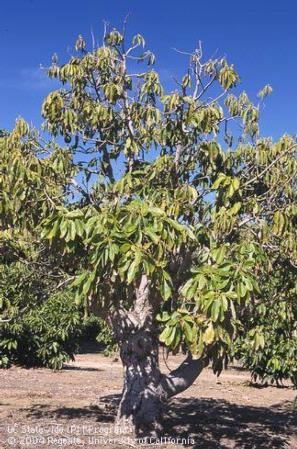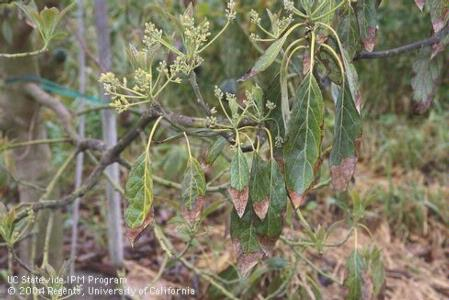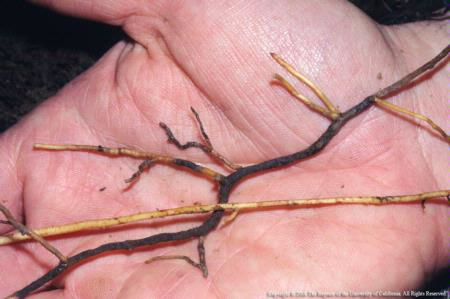In the last two weeks I’ve been out to see groves that have root rot, yet the growers did not recognize the signs. Two years of drought and use of salt loaded water have put stress on trees and made them more susceptible to root rot. Although irrigation management can bring about the symptoms of root rot – small, yellow, tip-burned leaves – because the tree in both cases is seeing a lack of water. I thought it would be appropriate to review the symptoms of avocado root rot.
What to look for:
Small, yellow, tip-burned leaves
Thin canopy
Die-back in the canopy, causing stag-horning (dead stems)
Little or no new leaf growth, hardened look to the leaves
Few or no leaves on the ground (tree doesn’t have energy to produce leaves)
Profuse flowering and small fruit
Sunburned fruit from reduced canopy
Then get on your knees and dig around in the wetted area of the root zone
Do you find roots in the top 3 inches of soil? NO, that’s a bad sign
Do you find any white root tips (it’s hard to find these when the soil is cold in the winter)? NO, that’s a bad sign.
Do you find black roots? Yes, that’s a bad sign.
These are all field diagnostics for avocado root rot. You can also sample roots and send them in for lab analysis, but in the winter, the root rot organisms are not active and you can actually get a false negative. Meaning the lab won’t pick it up and you then think you don’t have the disease. Use field clues to figure out whether you have root rot. Then figure out why you have it. It usually boils down to the amount and timing of water, but there are many other factors, such as water quality, fruit load, topworking and other stresses that can bring on the disease.
Images. Root rot in canopy, leaves and roots
Attached Images:


